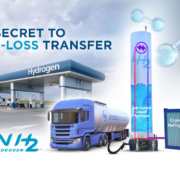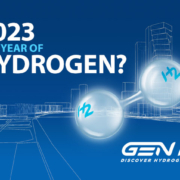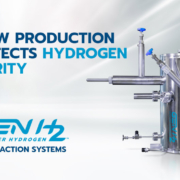Carbon Intensity’s Role in Hydrogen
By: GenH2 Staff
Read Time: 2 minutes
To understand the environmental impact of certain power sources, many types of measurements have been put into practice. Carbon Intensity (CI) is an example of one such method and determines how much carbon is produced throughout the value chain of energy sources. Measuring CI in the energy sector gives a better understanding of the global impacts of energy production to help strategize methods of reducing emissions.
Carbon Intensity represents total carbon emissions divided by total units of production, which shows how much carbon is released per unit of a product. For example, if there are two manufacturers of a product with different CI levels, the higher CI entity will emit more carbon per unit produced. This means that the other entity may still release more overall carbon due to more units being produced but at a reduced rate per unit. As the hydrogen economy expands, measuring CI will help us determine the most ecologically sustainable energy sources for a clean future.
Measuring CI in hydrogen production is becoming increasingly important as we transition to renewable energy. As mentioned in our H for Hydrogen Production blog, hydrogen can be produced from many different sources, with each having different carbon intensities. Assessing the CI for each of these hydrogen production methods helps determine which are best suited for global decarbonization efforts.
Right now, ‘Green Hydrogen’ is the most eco-friendly type of hydrogen and is made through electrolyzation powered by green renewable energy sources. This also means that it has the lowest possible carbon intensity of all hydrogen types and will significantly lower carbon intensity in the hydrogen value chain, which will in turn lower total global emissions, allowing it to serve as the ultimate renewable fuel of the future.
GenH2’s mission is to create infrastructure solutions for the liquid hydrogen value chain, focusing on the liquefaction, storage, and transfer of hydrogen and to accelerate widescale infrastructure rollout. To learn more about green hydrogen, see our Hydrogen A to Z blog post, G for Green Hydrogen!











